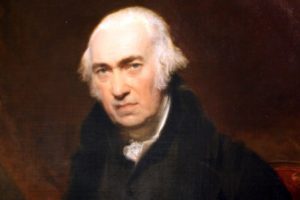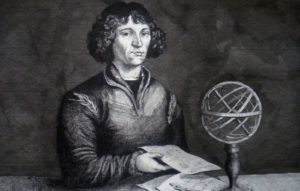James Watt (1736 – 1819) vastly improved the Newcomen engine with a new steam engine of his own in 1781. Watt’s improvements on the Newcomen’s engine provide one of the first significant examples of the application of cutting edge scientific research towards a technology that benefits society.

Watt was born in Scotland, was the son of a shipwright, ship owner, and merchant and he never attended university because he was intended to take over the family shipping business when he grew older. However when the family shipping business failed Watt traveled to London to learn instrument repair and returned to Scotland a year later where he eventually ended up working at Glasglow University as an instrument maker. It was here that Watt began to experiment with steam power, and in 1763 Watt asked to repair a Newcomen engine from the university.
While fixing the Newcomen engine, which had been in use and remained largely unchanged in its design for over half a century, Watt noticed the huge inefficiency required to fully heat and then fully cool the entire massive cylinder at every stroke of the piston. His insight was to create two chambers – one which was kept hot all of the time and one which was kept cool all of the time – that was connected by a valve that allowed steam to flow from the hot to the cool cylinder, where once it condensed would create the vacuum required to create the atmospheric pressure necessary to power the engine. This change dramatically improved the efficiency and cost-effectiveness of the steam engine. He also added subsequent improvements to his engine based on further experiments such as his double acting engine, which was a true steam engine as opposed to an atmospheric engine.
In 1769 Watt was able to patent his engine designs and he went on to have a successful commercial partnership with Matthew Boulton, an English manufacturer. The Boulton & Watt steam engines were state of the art at the time and helped to advance the Industrial Revolution through their usage in factories and mills. His legacy as a scientist and inventor is immortalized in the SI unit of power, the watt, being named after him.
